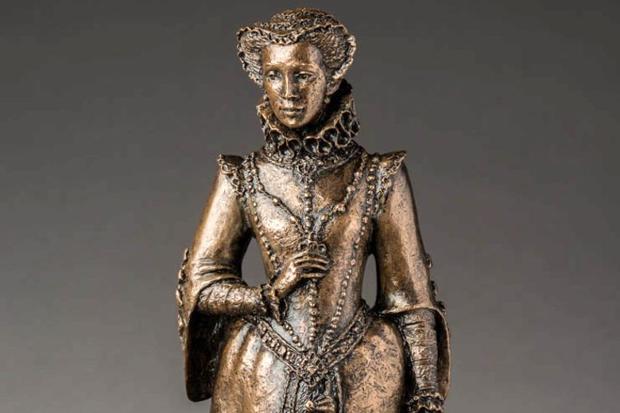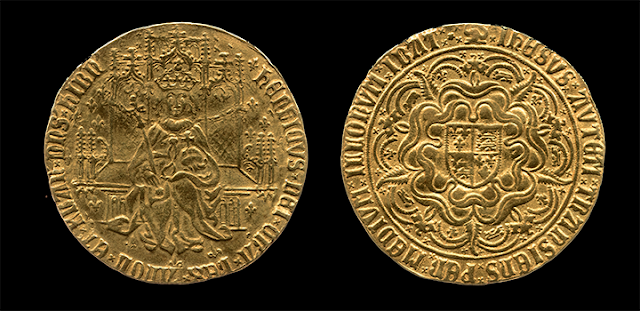James VI and I (19 June 1566 – 27 March 1625) was King of Scotland as James VI from 24 July 1567 and King of England and Ireland as James I from the union of the Scottish and English crowns on 24 March 1603 until his death.
 |
| James I of England & VI of Scotland |
James was the son of Mary, Queen of Scots, and a great-great-grandson of Henry VII, King of England and Lord of Ireland, positioning him to eventually accede to all three thrones.
James succeeded to the Scottish throne at the age of thirteen months, after his mother Mary was compelled to abdicate in his favour.
Four different regents governed during his minority, which ended officially in 1578, though he did not gain full control of his government until 1583.
In 1603, he succeeded the last Tudor monarch of England and Ireland, Elizabeth I, who died without issue. He continued to reign in all three kingdoms for 22 years, a period known as the Jacobean era after him, until his death in 1625 at the age of 58. After the Union of the Crowns, he based himself in England (the largest of the three realms) from 1603, only returning to Scotland once in 1617, and styled himself "King of Great Britain and Ireland". He was a major advocate of a single parliament for England and Scotland. In his reign, the Plantation of Ulster and British colonisation of the Americas began.
James was the only son of Mary, Queen of Scots, and her second husband, Henry Stuart, Lord Darnley. Both Mary and Darnley were great-grandchildren of Henry VII of England through Margaret Tudor, the older sister of Henry VIII. Mary's rule over Scotland was insecure, and she and her husband, being Roman Catholics, faced a rebellion by Protestant noblemen.
 |
| Henry Stuart, Lord Darnley |
James was born on 19 June 1566 at Edinburgh Castle, and as the eldest son and heir apparent of the monarch automatically became Duke of Rothesay and Prince and Great Steward of Scotland.
He was baptised "Charles James" or "James Charles" on 17 December 1566 in a Catholic ceremony held at Stirling Castle.
His godparents were Charles IX of France (represented by John, Count of Brienne), Elizabeth I of England (represented by the Earl of Bedford), and Emmanuel Philibert, Duke of Savoy (represented by ambassador Philibert du Croc). Mary refused to let the Archbishop of St Andrews, whom she referred to as "a pocky priest", spit in the child's mouth, as was then the custom.
The care of James was entrusted to the Earl and Countess of Mar, "to be conserved, nursed, and upbrought" in the security of Stirling Castle. James was crowned King of Scots at the age of thirteen months at the Church of the Holy Rude, Stirling, by Adam Bothwell, Bishop of Orkney, on 29 July 1567. The sermon at the coronation was preached by John Knox.
In accordance with the religious beliefs of most of the Scottish ruling class, James was brought up as a member of the Protestant Church of Scotland.
 |
| Mary I, Queen of Scot |
Lennox was a Protestant convert, but he was distrusted by Scottish Calvinists who noticed the physical displays of affection between him and the king and alleged that Lennox "went about to draw the King to carnal lust". In August 1582, in what became known as the Ruthven Raid, the Protestant earls of Gowrie and Angus lured James into Ruthven Castle, imprisoned him, and forced Lennox to leave Scotland.
 |
| Elizabeth of Bohemia |
After James was liberated in June 1583, he assumed increasing control of his kingdom. He pushed through the Black Acts to assert royal authority over the Kirk, and denounced the writings of his former tutor Buchanan.
Between 1584 and 1603, he established effective royal government and relative peace among the lords, ably assisted by John Maitland of Thirlestane who led the government until 1592. An eight-man commission known as the Octavians brought some control over the ruinous state of James's finances in 1596, but it drew opposition from vested interests. It was disbanded within a year after a riot in Edinburgh that was stoked by anti-Catholicism led the court to withdraw to Linlithgow temporarily.
Throughout his youth, James was praised for his chastity, since he showed little interest in women. After the loss of Lennox, he continued to prefer male company.
 |
| Charles IX of France |
James sailed from Leith on hearing that the crossing had been abandoned, in what Willson calls "the one romantic episode of his life", with a 300-strong retinue to fetch Anne personally.
The couple were married formally at the Bishop's Palace in Oslo on 23 November and returned to Scotland on 1 May 1590, after stays at Elsinore and Copenhagen and a meeting with Tycho Brahe.
By all accounts, James was at first infatuated with Anne and, in the early years of their marriage, seems always to have showed her patience and affection.
The royal couple produced three children who survived to adulthood: Henry Frederick, Prince of Wales, who died of typhoid fever in 1612, aged 18; Elizabeth, later queen of Bohemia; and Charles, his successor. Anne died before her husband in March 1619.
Elizabeth I was the last of Henry VIII's descendants, and James was seen as the most likely heir to the English throne through his great-grandmother Margaret Tudor, who was Henry VIII's oldest sister. From 1601, in the last years of Elizabeth I's life, certain English politicians—notably her chief minister Sir Robert Cecil, maintained a secret correspondence with James to prepare in advance for a smooth succession.
 |
| Elizabeth I of England |
On 5 April, James left Edinburgh for London, promising to return every three years (a promise that he did not keep), and progressed slowly southwards. Local lords received him with lavish hospitality along the route and James was amazed by the wealth of his new land and subjects. James said that he was 'swapping a stony couch for a deep feather bed'.
At Cecil's house, Theobalds, Hertfordshire, James was so in awe that he bought it there and then, arriving in the capital after Elizabeth's funeral.
His new subjects flocked to see him, relieved that the succession had triggered neither unrest nor invasion. When he entered London on 7 May, he was mobbed by a crowd of spectators.
His English coronation took place on 25 July, with elaborate allegories provided by dramatic poets such as Thomas Dekker and Ben Jonson. An outbreak of plague restricted festivities, but "the streets seemed paved with men," wrote Dekker. "Stalls instead of rich wares were set out with children, open casements filled up with women."
The kingdom to which James succeeded was, however, not without its problems. Monopolies and taxation had engendered a widespread sense of grievance, and the costs of war in Ireland had become a heavy burden on the government. By the time of his succession, England had incurred a debt of £400,000.
James survived two conspiracies in the first year of his reign, despite the smoothness of the succession and the warmth of his welcome: the Bye Plot and Main Plot, which led to the arrest of Lord Cobham and Sir Walter Raleigh, among others.
 |
| Henry de Cobham, first Baron of Cobham |
He was guarding a pile of wood not far from 36 barrels of gunpowder with which Fawkes intended to blow up Parliament House the following day and cause the destruction, as James put it, "not only ... of my person, nor of my wife and posterity also, but of the whole body of the State in general".
 |
| Charles I of England Gold Coin |
Salisbury exploited this to extract higher subsidies from the ensuing Parliament than any but one granted to Elizabeth.
Fawkes and others implicated in the unsuccessful conspiracy were executed.
The co-operation between monarch and Parliament following the Gunpowder Plot was atypical. Instead, it was the previous session of 1604 that shaped the attitudes of both sides for the rest of the reign, though the initial difficulties owed more to mutual incomprehension than conscious enmity. On 7 July 1604, James had angrily prorogued Parliament after failing to win its support either for full union or financial subsidies. "I will not thank where I feel no thanks due", he had remarked in his closing speech. "... I am not of such a stock as to praise fools ... You see how many things you did not well ... I wish you would make use of your liberty with more modesty in time to come".
After the Gunpowder Plot, James sanctioned harsh measures to control non-conforming English Catholics.
 |
| Young Charles IX of France coin |
James was conciliatory towards Catholics who took the Oath of Allegiance, and tolerated crypto-Catholicism even at court. Henry Howard, for example, was a crypto-Catholic, received back into the Catholic Church in his final months.
On ascending the English throne, James suspected that he might need the support of Catholics in England, so he assured the Earl of Northumberland, a prominent sympathiser of the old religion, that he would not persecute "any that will be quiet and give but an outward obedience to the law".
In the Millenary Petition of 1603, the Puritan clergy demanded the abolition of confirmation, wedding rings, and the term "priest", among other things, and that the wearing of cap and surplice become optional. James was strict in enforcing conformity at first, inducing a sense of persecution amongst many Puritans; but ejections and suspensions from livings became rarer as the reign continued.
As a result of the Hampton Court Conference of 1604, a new translation and compilation of approved books of the Bible was commissioned to resolve discrepancies among different translations then being used. The Authorized King James Version, as it came to be known, was completed in 1611 and is considered a masterpiece of Jacobean prose. It is still in widespread use.
 |
| Saint george, patron saint of the English: Saint george and the dragon exhibited at the temple gallery specialists in Russian icons |
After about the age of fifty, James suffered increasingly from arthritis, gout and kidney stones. He also lost his teeth and drank heavily. The king was often seriously ill during the last year of his life, leaving him an increasingly peripheral figure, rarely able to visit London, while Buckingham consolidated his control of Charles to ensure his own future.
One theory is that James may have suffered from porphyria, a disease of which his descendant George III of the United Kingdom exhibited some symptoms. James described his urine to physician Théodore de Mayerne as being the "dark red colour of Alicante wine".
The theory is dismissed by some experts, particularly in James's case, because he had kidney stones which can lead to blood in the urine, colouring it red.
In early 1625, James was plagued by severe attacks of arthritis, gout, and fainting fits, and fell seriously ill in March with tertian ague and then suffered a stroke. James finally died at Theobalds House on 27 March during a violent attack of dysentery, with Buckingham at his bedside. James's funeral on 7 May was a magnificent but disorderly affair. Bishop John Williams of Lincoln preached the sermon, observing, "King Solomon died in Peace, when he had lived about sixty years ... and so you know did King James". James was buried in Westminster Abbey. The position of the tomb was lost for many years. The lead coffin was found in the Henry VII vault in the 19th century, during an excavation of many of the vaults beneath the floor.































